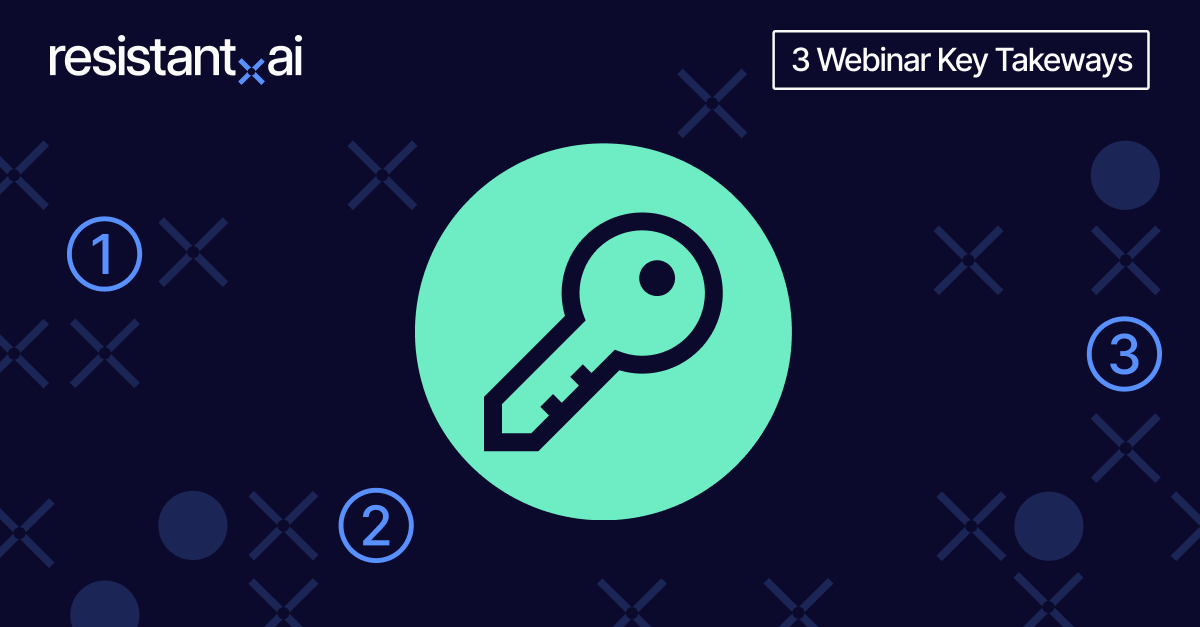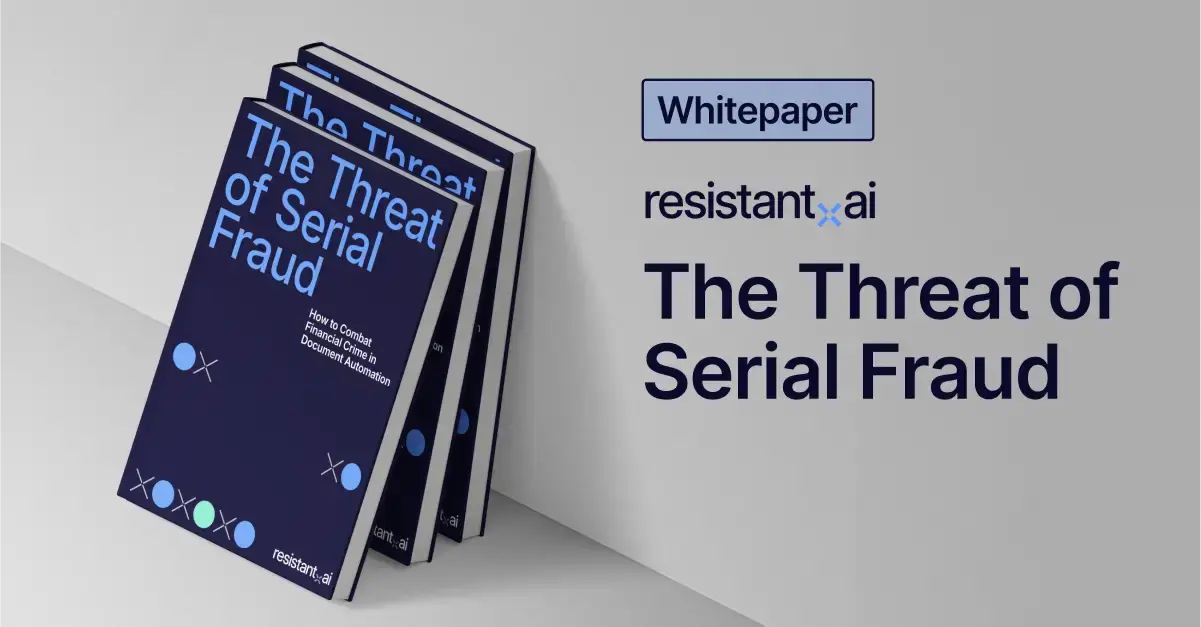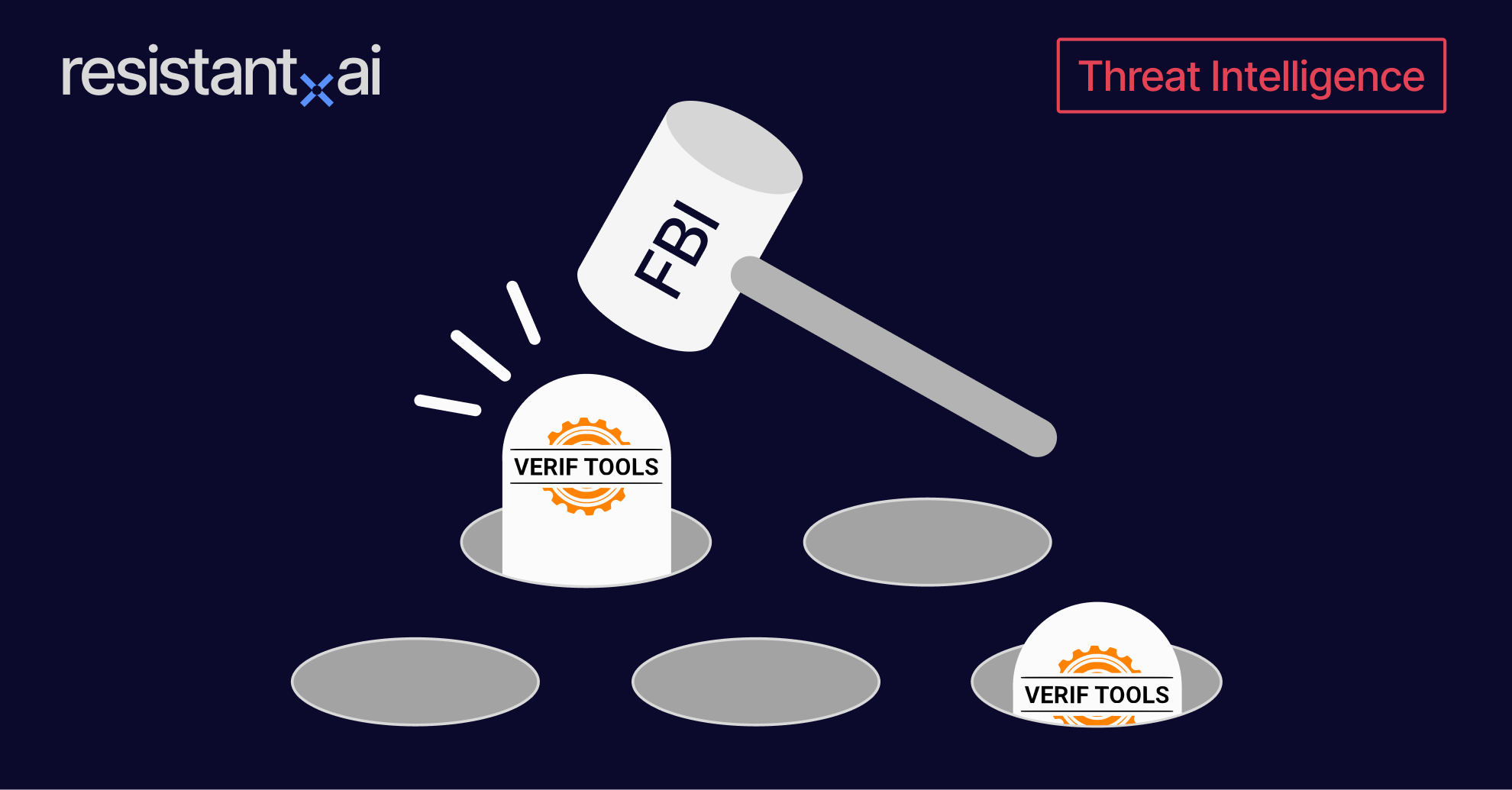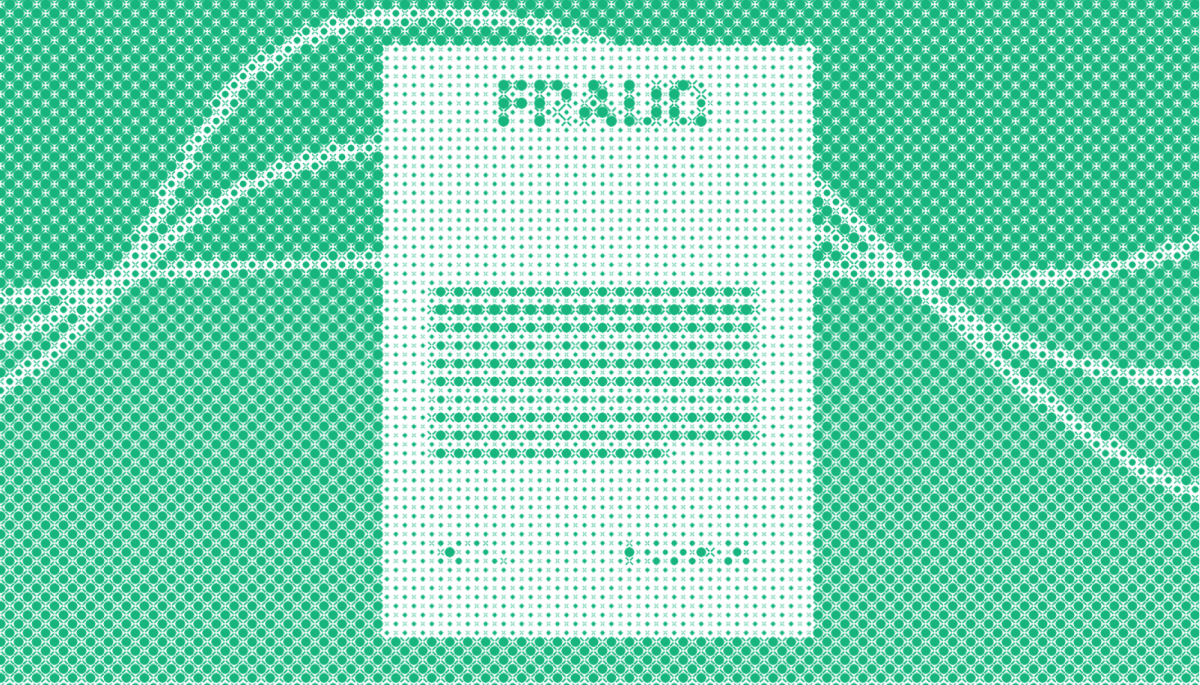
You might be interested in










During Resistant AI’s latest webinar on 19 September, 2024, we dove deep into the role template farms play in serial document fraud.
A document template is a PDF or image file of a real document (or mimicking) that can be edited to create multiple fake versions. It usually includes sample content, themes, logos, fields, or graphs, and often only requires substituting personal data.
Here’s an in-depth explanation of document templates by Kristyna, our solution engineering expert.
It all started with a document that did not align with its category. Using a single template, a genuine HSBC bank statement morphed into multiple versions of bank statements across different companies and document formats: either in scanned images, PDFs, and more. In this webinar snippet, Kristyna shared insight on how serial document fraud was first detected by Resistant AI:
For companies, serial document fraud is a growing threat as organized fraudsters and individuals can modify genuine document templates in various formats like PDF, images (even selfies) to bypass any organization’s document and income verification processes.
Serial document fraud is the industrial (re)production and distribution of fraudulent documents via automation practices that can take on two forms: decentralized or concentrated. As we dive deep into the origins of serial document fraud, discover how template farms contribute significantly to serial document fraud.
Template farms are digital entities such as an online marketplace, messaging, or social media accounts that specialize in the production and/or distribution of editable document templates (IDs, bank statements, utility bills, etc.) further used for financial crimes. These templates are frequently used to create fraudulent documents, helping individuals or organized fraudsters bypass a company’s document verification processes for mortgage underwriting, tenant screening, employment screening, etc.
Affordable and easily accessible, these template farms attract an estimated 1 1 million+ visitors per month combined.
Here’s a gif to illustrate how these template farms look at first glance:
With 55% of webinar attendees coming across a case of serial document fraud, knowing the origins of template farms becomes vital. Here’s a little snippet of Jan, our threat intelligence expert, indicating the source of template farms and its multiple use cases during the webinar:
From Resistant AI’s analysis of over 50 million documents, 2% of loan underwriting and KYB files involve serial fraud documents. Based on our research, there are over 100 template farms all across the globe.
That’s right—serial document fraud is a global threat involving over 120,000 document templates that can be organically searched and bought online—a number that keeps growing.
To combat serial document fraud, watch this webinar replay to improve your existing document fraud detection framework with actionable insights and industry queries answered. Here are two ways to get started:
Every case of serial document fraud presents three common warning signs that companies should keep a lookout for:
Data is king. When unexpected surges in document fraud occur, companies typically catch them later in the journey due to the accumulation of fraudulent signs and suspicious behaviors. As Kristyna pointed out in the webinar, “Monitor the patterns in your data. If you notice spikes in specific areas, like onboarding, it could mean fraudsters have found a loophole in your processes and are actively exploiting it.”
The second sign is repetitive backgrounds or content. Any pattern can be a useful indicator. As Kristyna explained, “These could include a sudden increase in a specific document type or repeated, similar documents within a short time frame.”
Lastly, serial document fraud is often coordinated, with 70% of attacks happening within a single week. According to Joe, “Those using template farms are typically organized criminals exploiting a loophole, or individuals submitting the same template multiple times. This explains why the same document keeps reappearing. For banks and payment firms, fraudsters use fake identities to bypass the onboarding process, often relying on previously successful documents—resulting in sudden spikes in fraud over a short period.”
The key to uncovering serial document fraud lies in identifying subtle similarities between document templates, such as pixelated logos and other fine details. However, many of these discrepancies are beyond human detection, making AI and machine learning paramount for serial document fraud detection.
As Kristyna emphasized, “Technology is essential for organizations as an extra layer of protection, especially when automating document processing. Without fraud prevention, automating these processes is essentially an open invitation for criminals to exploit the loophole.” Jan, leveraging his threat intelligence expertise, also highlighted the brazenness of template farms, noting how they advertise with claims like, “Get a $5,000 loan just by doing…”
Automation can be a gift and a curse when it comes to serial document fraud. For organizations looking to combat document fraud successfully, a layered approach such as adding a document fraud detector to automated document processing
If you wonder how AI and machine learning software detects serial document fraud—-get a front row seat to see how our software analyzes serial fraud documents to provide template farm and forgery indicators.
Our document fraud prevention tools help organizations protect their assets with cutting-edge technology. Whether to combat organized fraudsters or individuals looking to get quick loans, watch this replay for insights on identifying template farms and keeping them out of your KYB, KYC, and onboarding processes.
Learn more from our first webinar on detecting Only Fake and AI-generated document fraud.
A layered approach is essential for protecting organizations from serial document fraud. This means combining document fraud detection software with manual investigations. Given the sheer volume of data, relying solely on manual methods is no longer feasible, as it’s difficult to catch all the warning signs.
For instance, if targeted by an organized crime group, you’ll need to adjust patterns and behaviors across previously affected accounts. However, this isn't foolproof, as some might just be individuals submitting one-off applications, making it harder to detect due to the lack of prior patterns or behaviors.
Yes, absolutely. Resistant AI’s document forensics software is document-agnostic, meaning it can work with any type of document, including cheques. In fact, we've encountered fraudulent cheque templates in past analyses of our customers' documents.
The short answer is yes. We've identified organized crime rings and fraudsters who specialize in creating their own documents and templates.
These groups often mix and match templates of their own and from template farms, altering details to bypass document and income verification processes.
This suggests a coordinated effort, with mule accounts being set up to commit various types of fraud, such as Authorized Push Payment (APP) scams or Venmo fraud. One common method these fraudsters use involves circulating money between 5–7 newly created accounts before maxing them out in bust-out fraud schemes.
Our solution primarily focuses on analyzing documents directly uploaded by users in formats like PDF or images. While scanning paper documents is possible, it may introduce challenges in accuracy. We recommend analyzing digital documents for the best results.
This is why we have a dedicated threat intelligence unit at Resistant AI. We’ve identified that templates are used across different websites, but tracing them directly to the source remains a challenge due to the need for in-depth research on timing, website data, and domain registrations, etc. Although we prioritize this research, our software currently detects serial document fraud and repeated templates. Even if we trace back to a template farm, we use code names in our software to avoid disclosing specific farm details.
This is one method fraudsters may use to bypass verification, but we collaborate closely with customers to develop sustainable solutions. Policies also play a critical role in fraud detection. For some customers, receiving a physical document is already a red flag. It’s crucial to establish clear policies as part of a layered document fraud detection approach.
For serial document fraud, our tool is highly accurate. False positives depend on factors such as document quality and geographic location, but they vary from case to case.
No, we do not report suspected farms because there are too many to track comprehensively. Instead, we focus on research and tracking to help organizations understand the evolving impact of template farms.


